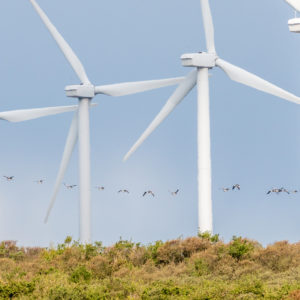According to physics, energy can neither be created, nor destroyed. That is not to say that all forms of energy are created equal, especially not when it comes to state subsidies. In Oklahoma, energy subsidies are again under debate at the state capitol, where the state’s Corporation Commission has spent several days weighing a proposed wind energy project that could, in theory, bring billions of dollars of investment to the state, but also risks costing the state millions in subsidy money. The Wind Catcher Energy Connection project would bring 2,000 megawatts of new wind energy to customers in Oklahoma, Arkansas, Louisiana and Texas.
The power would also come with a hefty, $4.5 billion price tag. During hearings this week, Public Service Co. of Oklahoma, one of the state’s major utilities, petitioned the board for approval to recover the costs of the project from ratepayers. If the cost-recovery is approved, the utility would be allowed to recover about $1.4 billion in costs related to its purchase of a 30 percent stake in the panhandle project.
Even without the Wind Catcher Energy Connection, wind power has been an expensive gamble for Oklahoma. The state has spent billions in subsidies to prop up the industry. On Monday, the state senate narrowly defeated a bill that would have ended a state subsidy for renewable energy providers. The roughly $70 million tax credit primarily benefits the wind industry. Companies earn tax credits of a fraction of a cent per kilowatt-hour of electricity generated from renewable sources, including wind, solar, and geothermal. They can then use these credits to reduce their tax liabilities for up to a decade.
In 2014, a change to the law allowed companies to cash out their credits for 85 percent of their face value. This meant that rather than postponing an eventual tax payment, renewable energy companies were now receiving money directly from the state government.
“Everybody but the company profiting pays for this tax credit scheme,” said Byron Schlomach, director of the 1889 Institute, an Oklahoma limited-government group. “When new companies enter a state, new demands are made on existing infrastructure and institutions, but new taxes are generated as well.”
He considers Oklahoma’s tax credits to be a market distortion, reducing costs for the wind industry by increasing them for other sectors of the state’s economy. While the tax credits are significant enough to distort the state’s industries, he argues that they are ineffective and largely dwarfed by federal subsidies.
“Oklahoma’s tax credit is dwarfed by the federal credit, which does the most damage economically,” said Schlomach. “Because of that, while still a good idea, ending the tax credit will not restore the market to normal and will only modestly lessen the heavy hand of government on consumer choice as long as the federal credit continues.”
Energy is important business in Oklahoma, where fees and taxes on the oil and gas industries provide much of the state’s revenues. Ironically, given Oklahoma’s state finances, fossil fuels could quite literally end up paying for green energy.
“What is notable is that lawmakers took a far different approach to fossil fuel energy producers. Year in and year out, legislators have chosen to raise taxes on fossil fuel energy sources even as they protect handouts to “green” energy producers,” wrote the Oklahoma City Oklahoman in an editorial on Tuesday.
For the past four years, Oklahoma has repeatedly increased taxes on oil as the state seeks to fill budget holes caused by falling oil prices. In 2014, the state legislature doubled the tax rate on new horizontal wells. This tax increase was followed by a limit on rebates for economically risky wells in 2016, a change which raised an additional $120 million in tax revenues. A year later, lawmakers ended all gross production tax rebates and increased the gross production tax on previously drilled wells, raising another $141 million in tax revenue. The gross production tax rate was raised again this year, as the state struggled to balance its budget.
The Wind Catcher project has already been approved by state regulators in Louisiana and Arkansas. The Texas Public Utility Commission will take up the approval question at a meeting on July 12.

